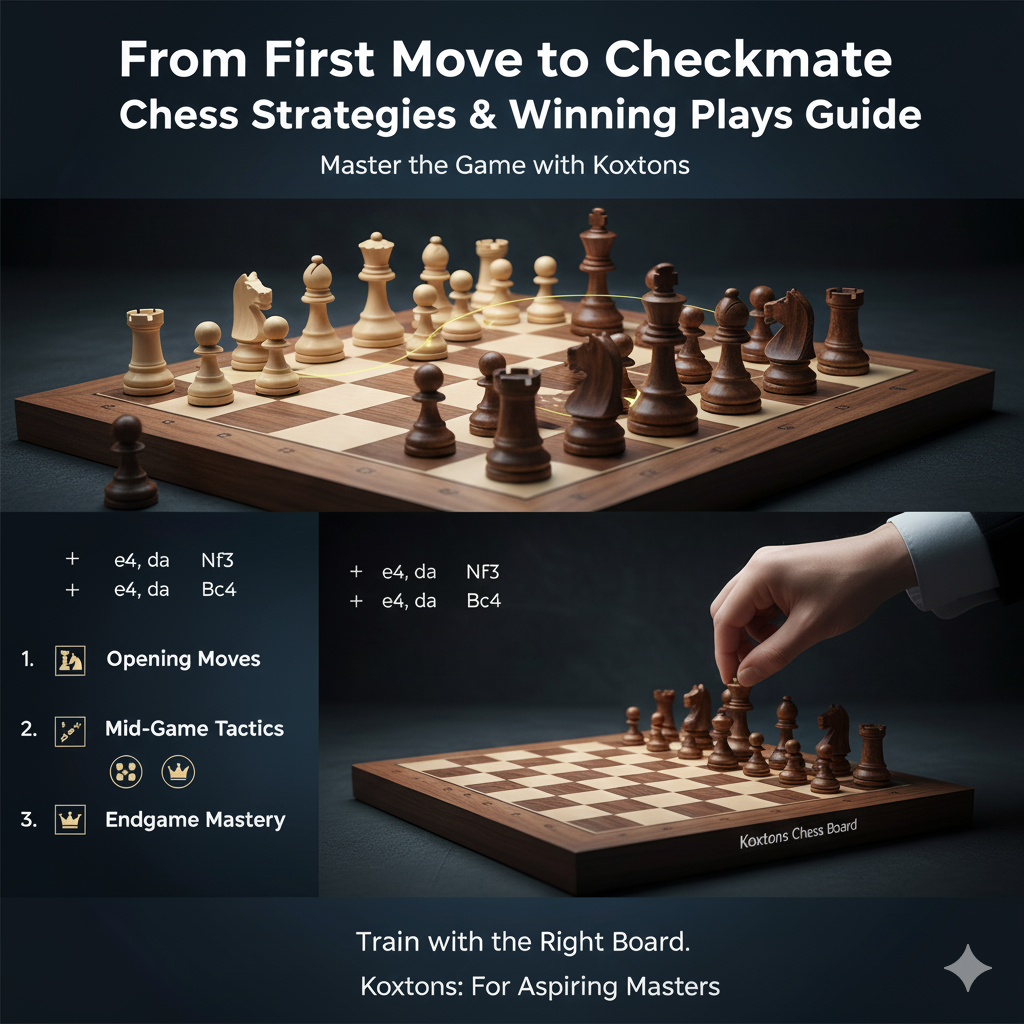
From First Move to Checkmate: Chess Strategies & Winning Plays Guide
Posted on: 16 Sep, 2025
Mastering Chess: Strategy, Patience, and Winning Tactics
Chess is more than just a game—it’s a battle of strategy, patience, and skill. Whether you’re a beginner learning the basics or an experienced player aiming to sharpen your tactics, mastering the journey from the first move to checkmate is essential. This guide explores the key chess strategies and winning plays that can help you outsmart your opponent every time.
1. The Opening Moves: Setting the Stage
The first few moves in chess are critical—they set the foundation for the entire game. Beginners should focus on:
- Controlling the center with pawns (e4, d4, e5, d5).
- Developing knights and bishops early instead of moving the same piece repeatedly.
- Castling quickly for king safety.
Example: The popular “Italian Game” (e4, e5, Nf3, Nc6, Bc4) is perfect for beginners as it develops pieces while controlling the center.
2. Mid-Game Strategies: Building Pressure
Once the opening is complete, the mid-game is where strategies and tactics come alive. Here are key tips:
- Plan your attack instead of moving randomly.
- Look for forks, pins, and skewers to put pressure on your opponent’s pieces.
- Control open files with rooks and place queens strategically.
- Avoid pawn weaknesses like isolated or doubled pawns.
Remember, the goal is to force your opponent into making mistakes while strengthening your position.
3. Endgame Tactics: Turning the Advantage into Victory
The endgame begins when few pieces are left on the board. Winning strategies here include:
- King activity – unlike in the opening, the king becomes a strong piece in the endgame.
- Promotion of pawns – protect your pawns and push them to the last rank for a queen promotion.
- Checkmating patterns – learn simple checkmates like king + queen vs king or king + rook vs king.
4. Winning Plays Every Chess Player Should Master
To consistently win, practice these plays:
- Forks: Attack two pieces at once (often with knights).
- Pins: Trap a piece that can’t move without exposing a more valuable piece.
- Discovered attacks: Move one piece to reveal an attack from another.
- Sacrifices: Give up material to gain a stronger position or checkmate opportunity.
5. Train with the Right Chess Board
Practicing strategies becomes easier when you have a high-quality chess set. At Koxtons, you’ll find durable and tournament-style Chess Boards
that are perfect for both learning and professional play.
If you’re looking to improve your game, investing in a chess board online is a smart choice. Players who want reliable quality often prefer to buy chess board from trusted brands like Koxtons, where design meets durability.
Conclusion
From the very first move to the final checkmate, every step in chess requires planning and foresight. By mastering openings, applying strong mid-game strategies, and learning key endgame tactics, you can steadily improve your winning chances. So, pick up a Koxtons Chess Board today and start practicing these strategies—the next checkmate could be yours.
FAQs on Chess Strategies & Winning Plays
Q1: What is the most important chess opening for beginners?
A: The Italian Game and Sicilian Defense are great for learning piece development and center control.
Q2: How can I win chess quickly?
A: Focus on fast development, avoid unnecessary pawn moves, and aim for tactical traps like scholar’s mate.
Q3: What are the 3 golden rules of chess opening?
A: Control the center, develop pieces early, and ensure king safety by castling.
Q4: Which chess strategy helps in the mid-game?
A: Tactics like forks, pins, and discovered attacks help create pressure and capture valuable pieces.
Q5: How do I practice chess effectively?
A: Play regularly, solve chess puzzles, and use a high-quality Koxtons Chess Board for realistic practice.







Comments
No comment yet.